ID-DOC: general search
Here you can enter a general keyword and perform a general search.
??? What are these question marks doing here? These represent tools which we know by a Dutch or French name, but who's English name is yet unknown. Suggestions are always welcome!
If you cannot find a certain tool, or if you experience other problems with this page, please let us know at info@mot.be.
Search for: tool
Showing search results 1,101 - 1,150
1,492 results found
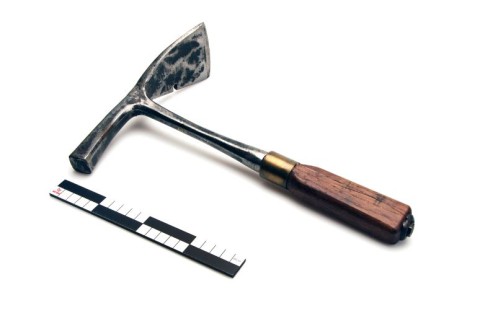
Roofer's adze
This text can only be consulted in Dutch
<https://www.mot.be/resource/Tool/roofers-adze?lang=nl>
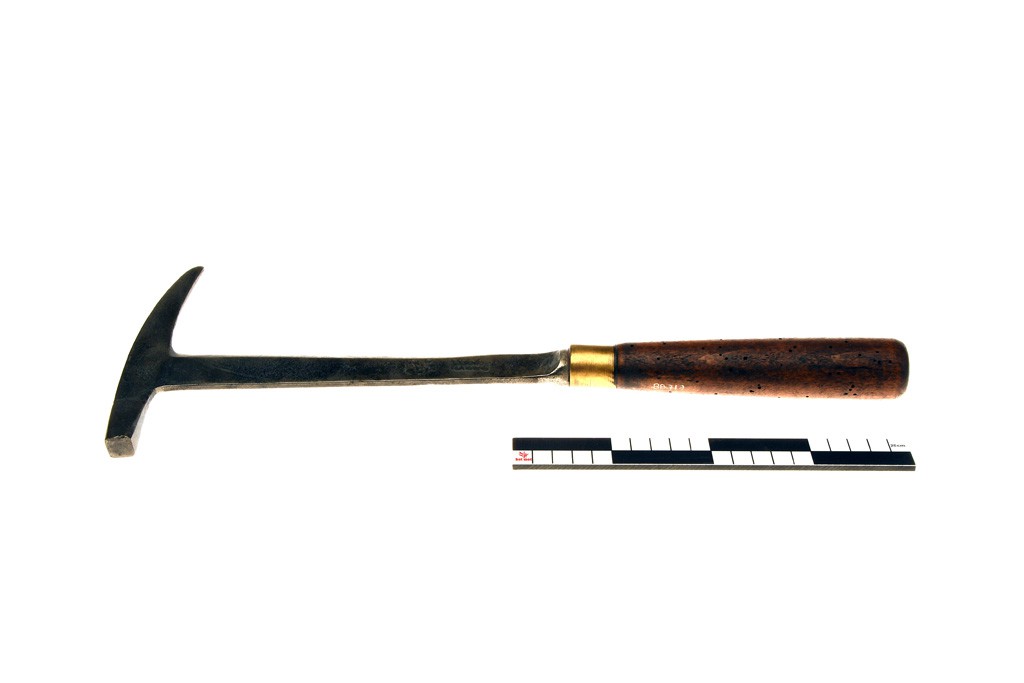
Roofer's hammer
Hammer (400-800 gr) used by the slater when covering or repairing a slate
roof. It is a composite tool that has a pointed end on one side - which
punch holes for the nails in the slates - and on the other side a hammer
end that drives the slate nails into the wood. In the middle, between the
two ends, there may be a pear-shaped cutout with which nails can be pulled
out. Another possibility is that there is a protrusion with a V-shaped
cutout at the top. Between the working part and the hammer handle there is
- on one or both sides - a sharp side with which the slates are cut to
size. This is done with the help of a slater's stake. [MOT]
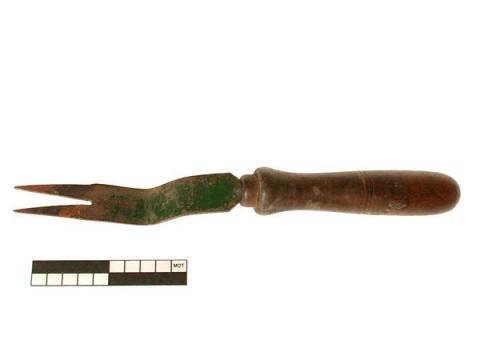
Root extractor
This text can only be consulted in Dutch
<https://www.mot.be/resource/Tool/root-extractor?lang=nl>
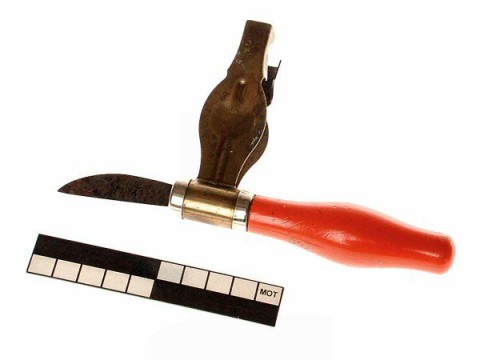
Rose knife
This text can only be consulted in Dutch
<https://www.mot.be/resource/Tool/rose-knife?lang=nl>
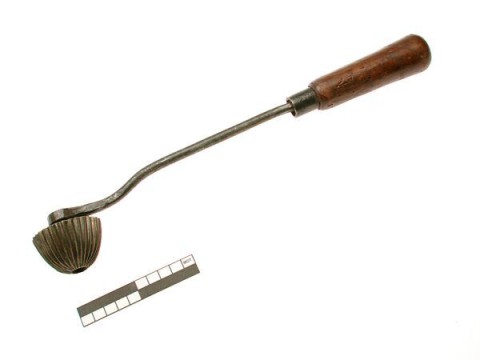
Rosette iron
This text can only be consulted in Dutch
<https://www.mot.be/resource/Tool/rosette-iron?lang=nl>
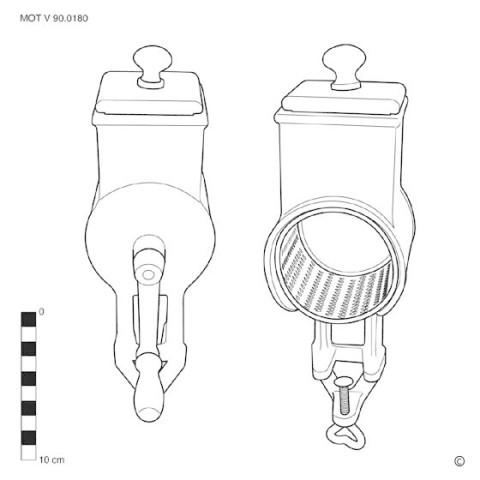
Rotary grater
This text can only be consulted in Dutch
<https://www.mot.be/resource/Tool/rotary-grater?lang=nl>
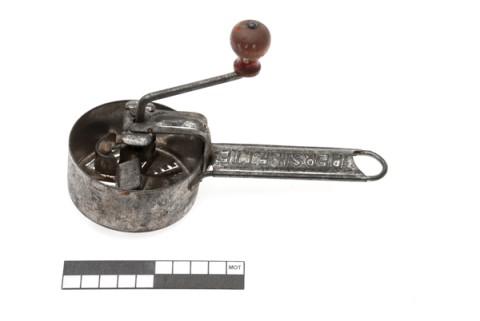
Rotary herb chopper
This text can only be consulted in Dutch
<https://www.mot.be/resource/Tool/rotary-herb-chopper?lang=nl>
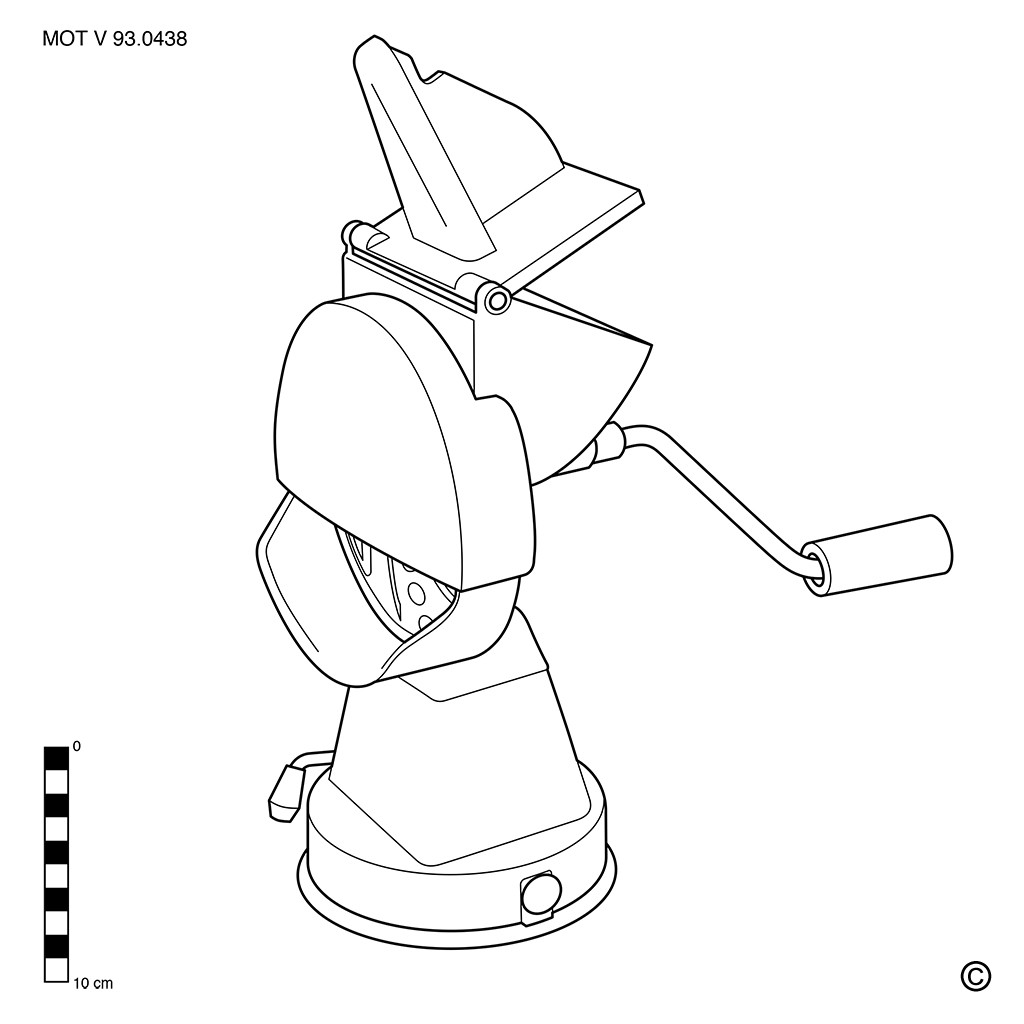
Rotary vegetable shredder
This text can only be consulted in Dutch
<https://www.mot.be/resource/Tool/rotary-vegetable-shredder?lang=nl>
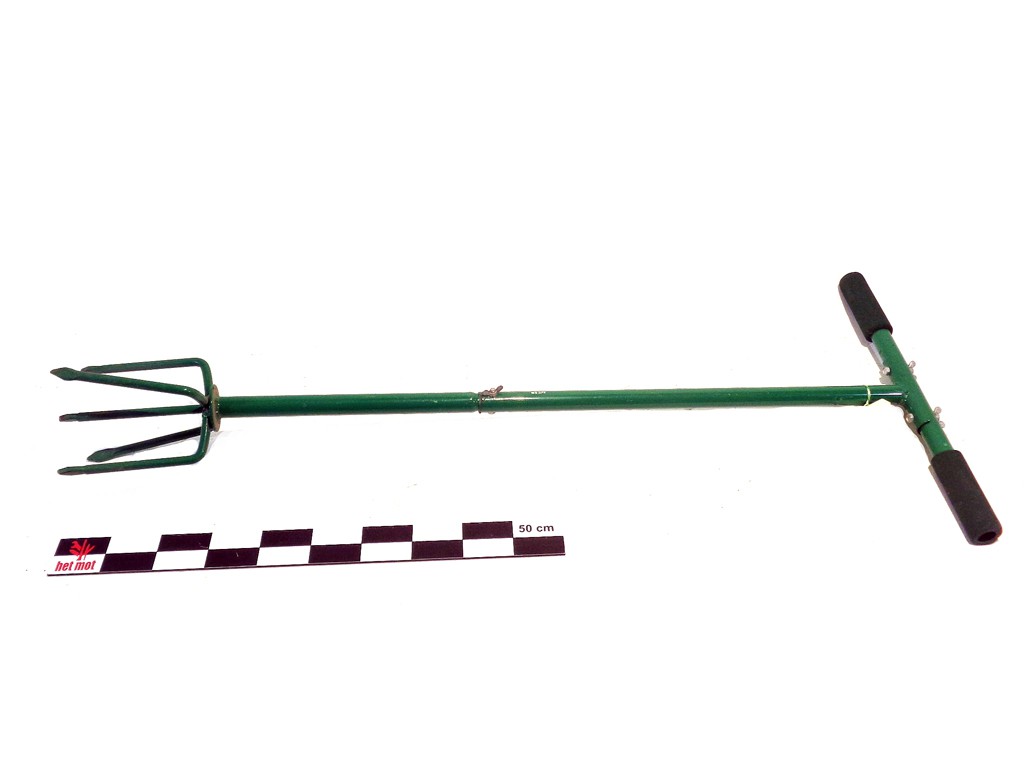
Rotating garden claw
This text can only be consulted in Dutch
<https://www.mot.be/resource/Tool/rotating-garden-claw?lang=nl>
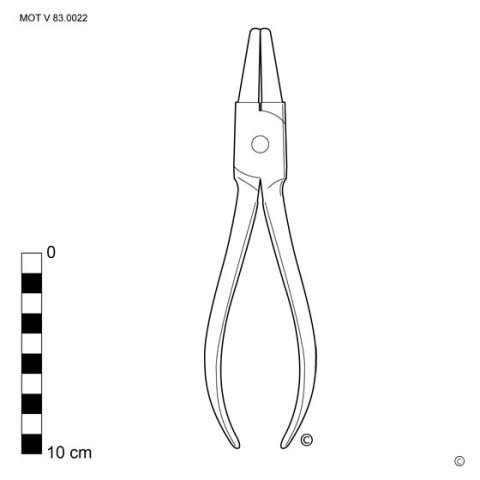
Round nose pliers
This text can only be consulted in Dutch
<https://www.mot.be/resource/Tool/round-nose-pliers?lang=nl>
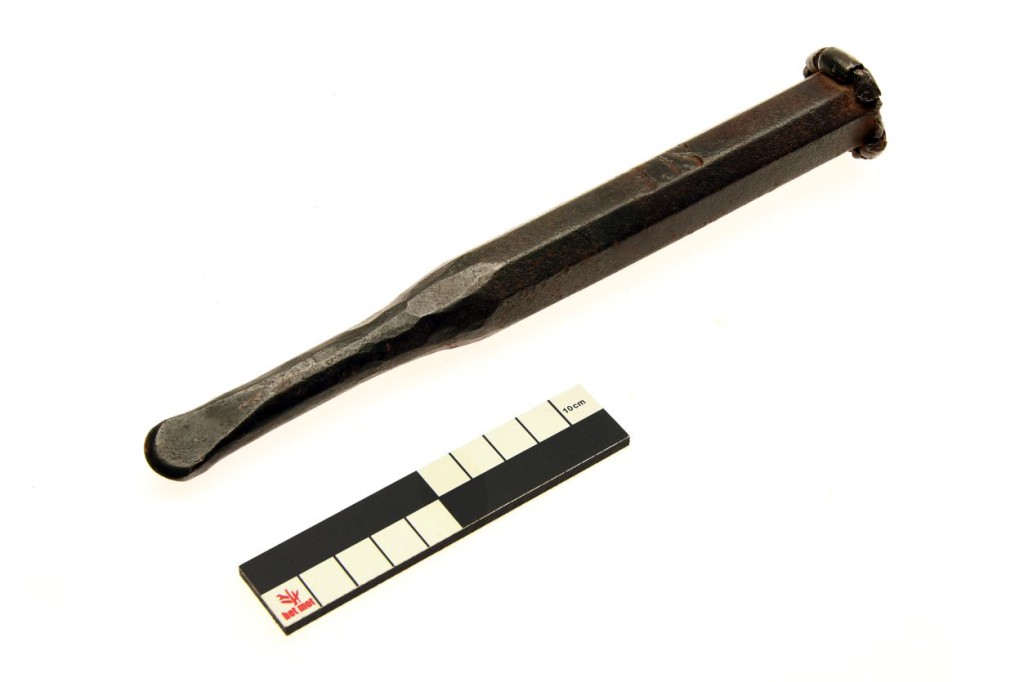
Rounded chisel
Metal chisel with a rounded cutting edge. Models with a wooden handle are
more suitable for soft stones such as marl. Used by sculptors to carve out
round features, such as the hairs or the eyes on a portrait. The stonemason
uses it to cut curved elements and the groove on a window sill which
prevents rainwater from running down the wall. [MOT]
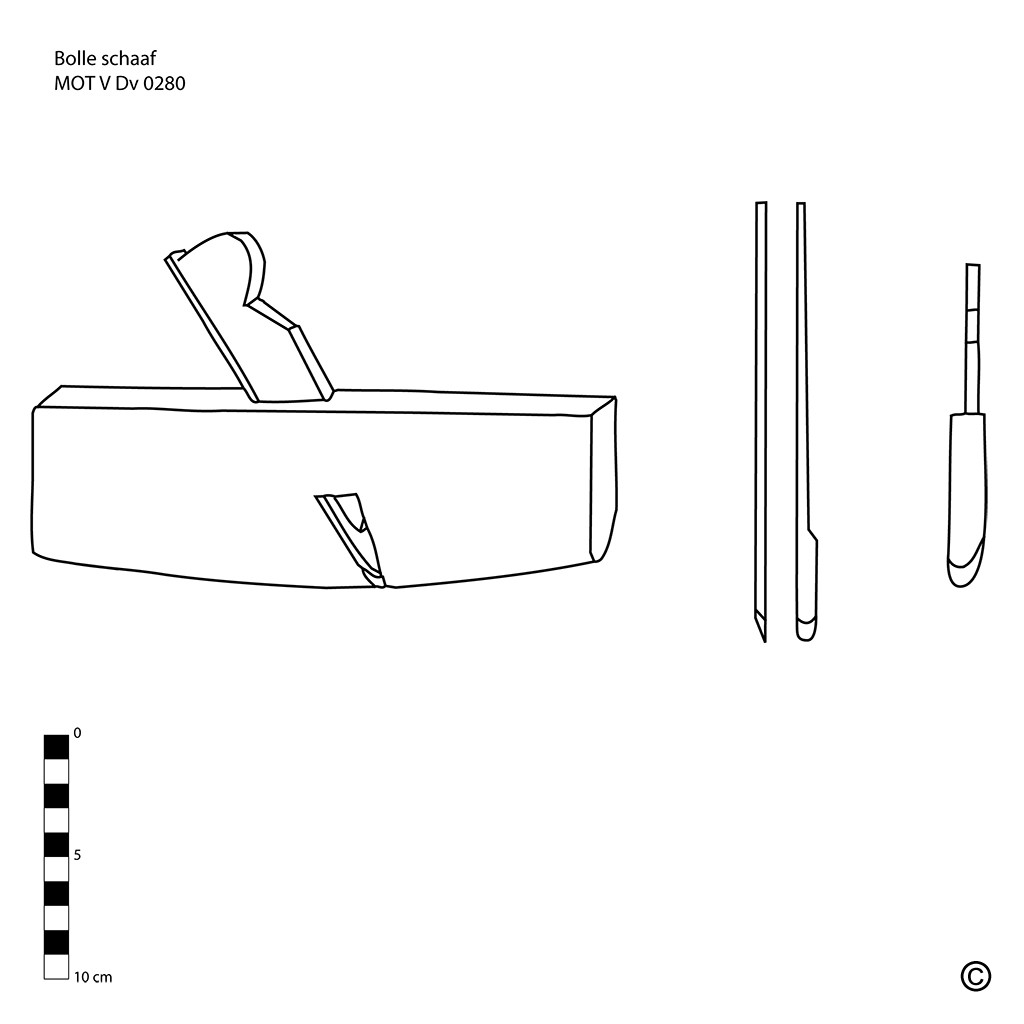
Rounded plane
This text can only be consulted in Dutch
<https://www.mot.be/resource/Tool/rounded-plane?lang=nl>
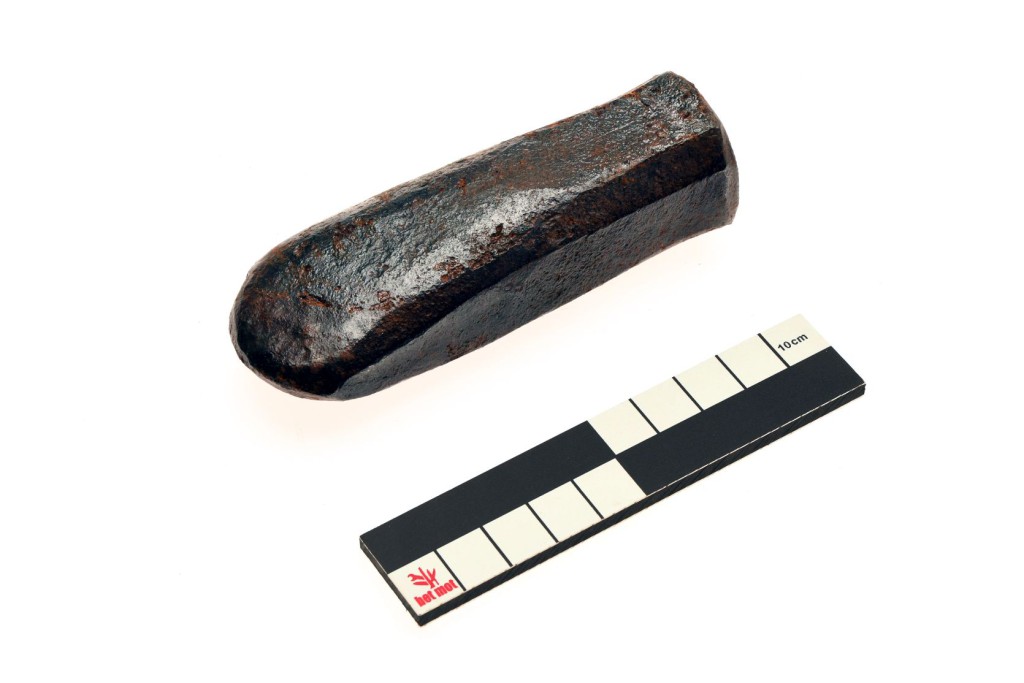
Rounded wedge
This text can only be consulted in Dutch
<https://www.mot.be/resource/Tool/rounded-wedge?lang=nl>
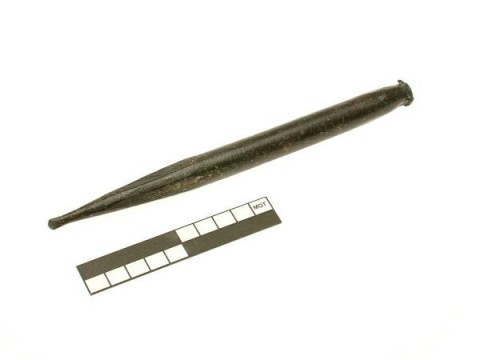
Roundel
The description of the roundel can only be consulted in dutch.
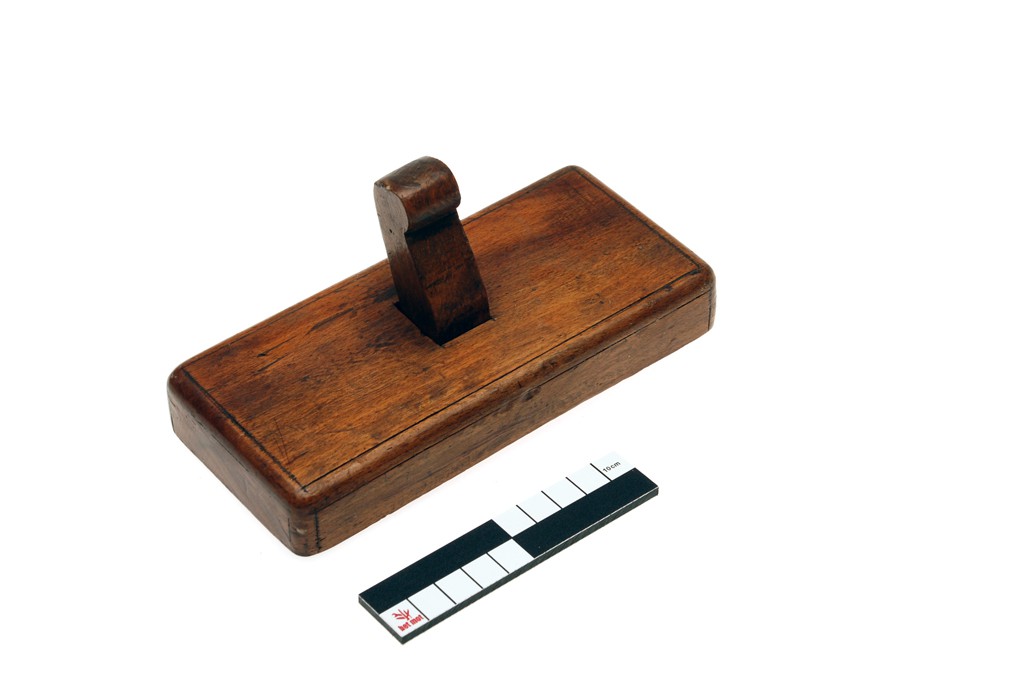
Router plane
This text can only be consulted in Dutch
<https://www.mot.be/resource/Tool/router-plane?lang=nl>
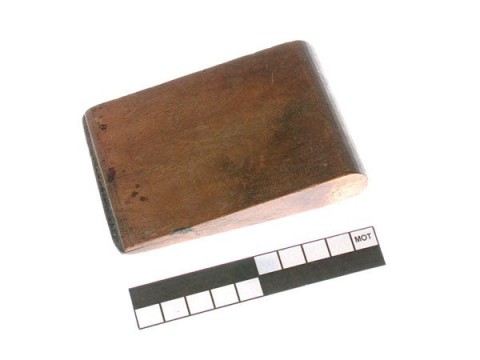
Rubber (furrier)
Wedge-shaped wooden hand tool (approx. 10-12 cm long; approx. 7-10 cm wide)
with a blunt metal or horn blade, sometimes with rounded corners, fixed in
the narrow tapered end. The furrier uses the expanded wood to flatten seams
(see also seam rubber), smoothly rubbing nailed material and stretching the
wetted sheets. It is handled with the right hand while holding the skin
with the left hand. [MOT]
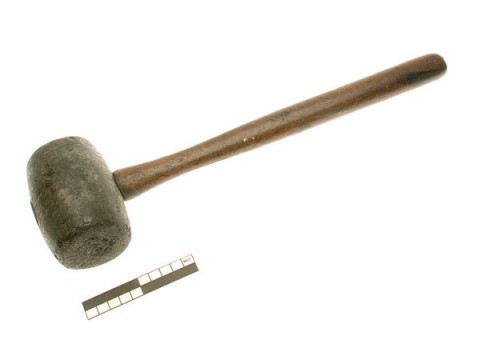
Rubber face hammer
This text can only be consulted in Dutch
<https://www.mot.be/resource/Tool/rubber-face-hammer?lang=nl>
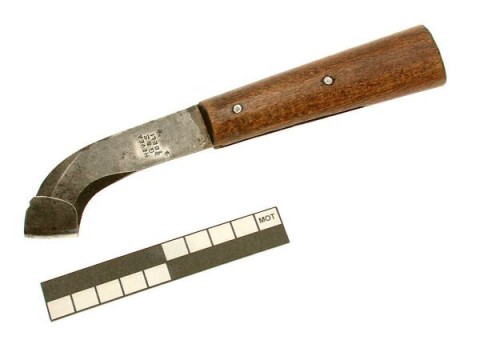
Rubber tapping knife
Rubber is extracted from the milk sap (latex) of the heveas. Extraction is
done by tapping the living tree with the tapping knife. The latex is cut
transversely. Therefore, the tap cut is made at an angle of approximately
30 ° to the horizontal plane, causing the latex to run off the cut. A metal
gutter is attached under the cut, through which the latex ends up in the
receptacle (1). The tap knife has a metal curved blade with a U-shaped
curved lip at the end and a straight wooden handle of approx. 10 cm. When
tapping, a strip of bark of about 1.5 cm thickness is cut away with this
sharp lip. The tap knife resembles the timber scribe with which a tree to
be felled is marked and the clog maker's timber scribe with which the
clogmaker applies decorations to clogs. [MOT] (1) See eg VAN DEN ABEELE &
VANDENPUT: 374.
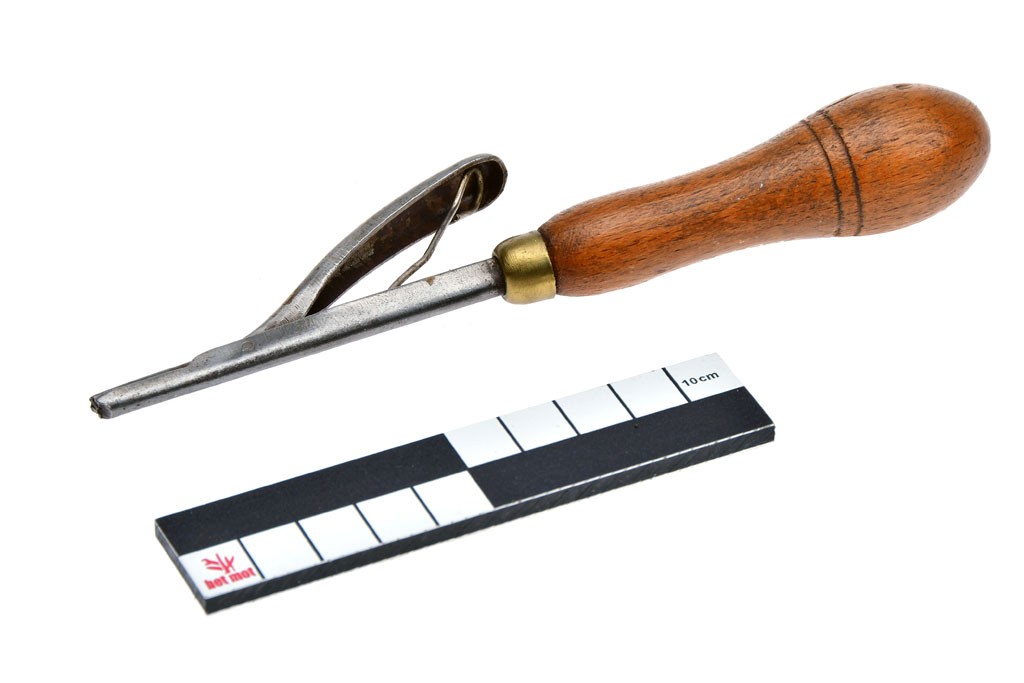
Rug latch hook
This text can only be consulted in Dutch
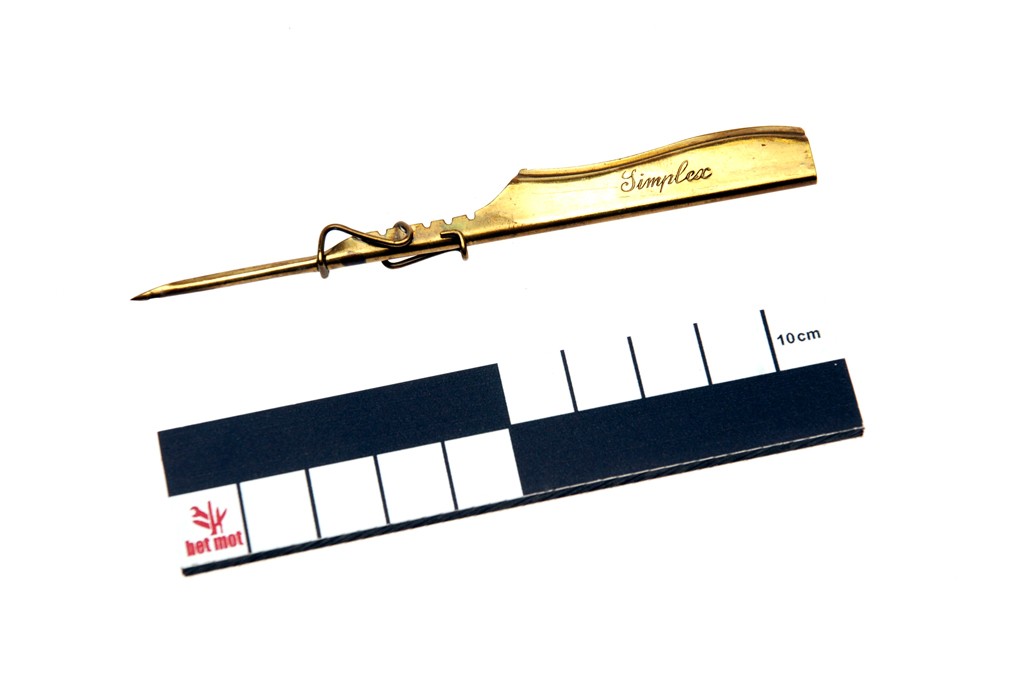
Rug needle
This text can only be consulted in Dutch
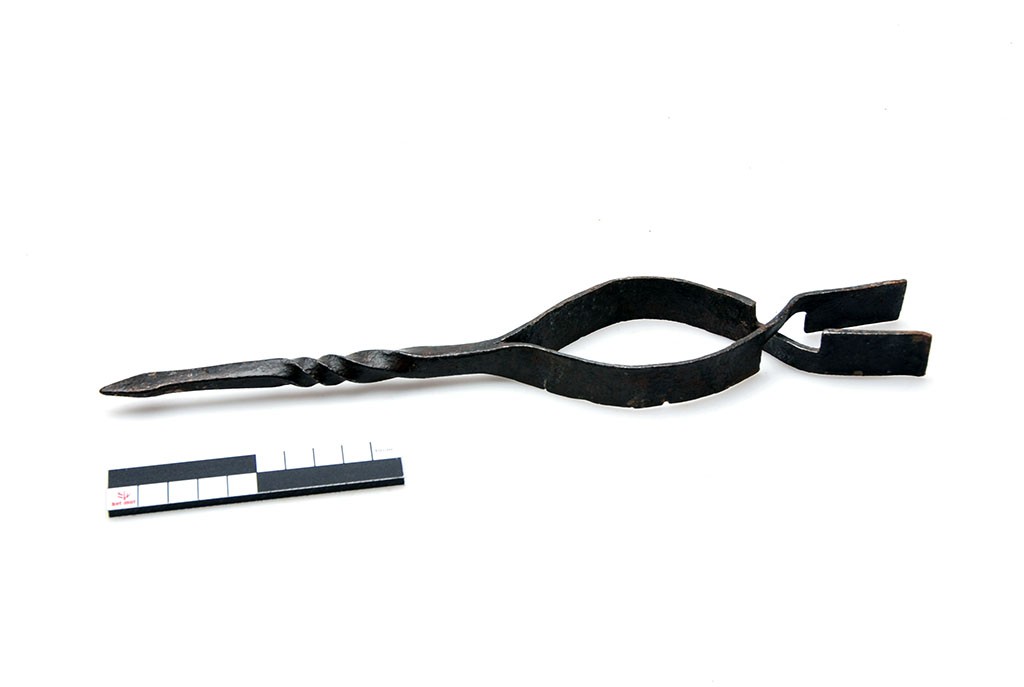
Rush holder
This text can only be consulted in Dutch
<https://www.mot.be/resource/Tool/rush-holder?lang=nl>
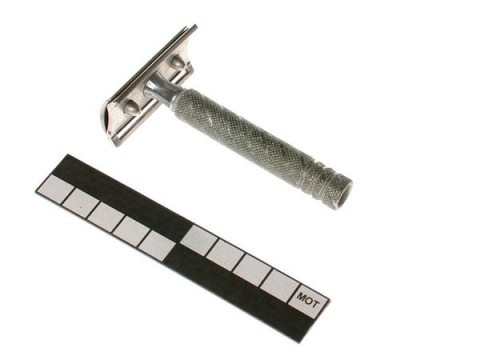
Safety razor
Metal blade (approx. 4 cm by 1 cm) that cuts on one or two sides and which
is placed in a cap that is attached at right angles to a straight handle
(approx. 7-10 cm). The whole can be made of metal or plastic. In the past,
the blades were sharpened on a specially designed razor strop; today they
are disposable blades. Compared to the razor knife, the safety razor makes
it easier to shave without cutting. [MOT]
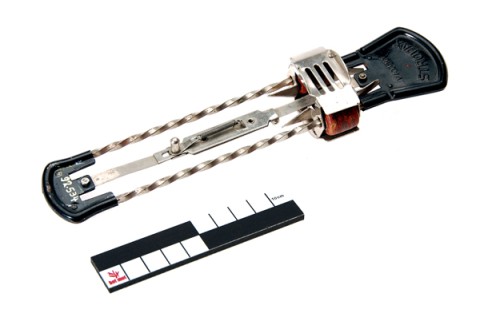
Safety razor sharpener
There are different models of sharpeners for sharpening the blades of a
safety razor (1). In the past, people used a razor strop on which they
pushed the knife back and forth. You can also use a concave oil stone to
sharpen the blades. [MOT] (1) DURBIN G., Wig, hairdressing and shaving
bygones, Oxford, 1984: 21.
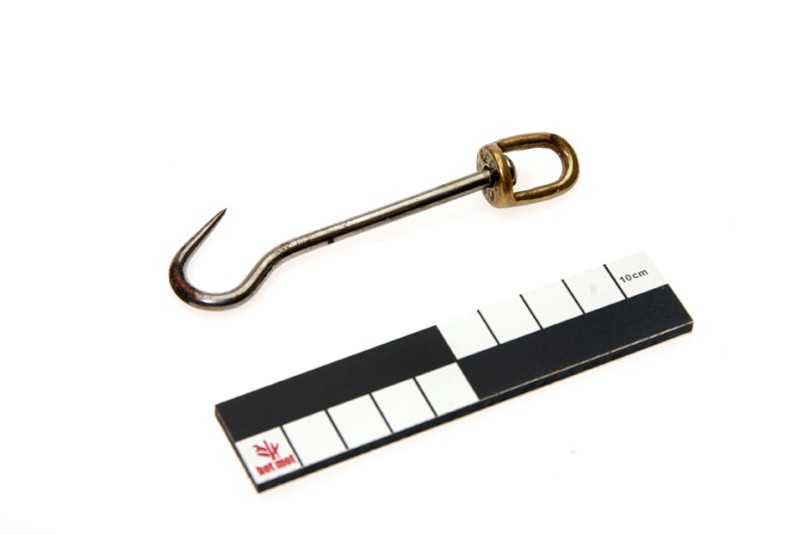
Sail hook
This text can only be consulted in Dutch
<https://www.mot.be/resource/Tool/sail-hook?lang=nl>
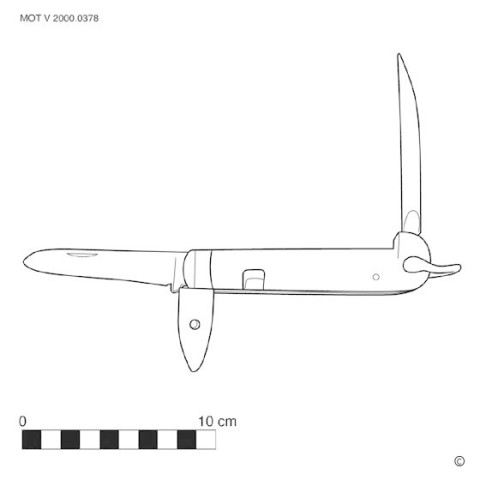
Sailor's knife (folding)
This text can only be consulted in Dutch
<https://www.mot.be/resource/Tool/sailors-knife-folding?lang=nl>
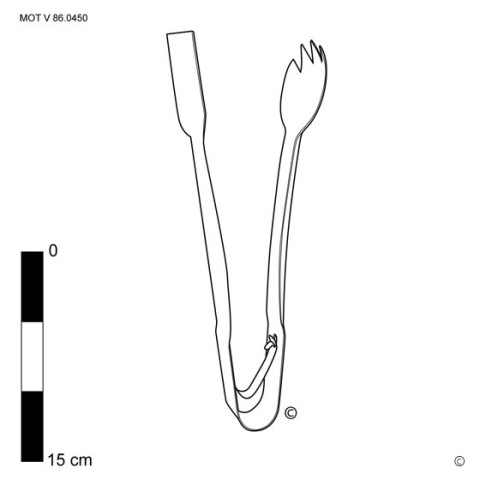
Salad tongs
This text can only be consulted in Dutch
<https://www.mot.be/resource/Tool/salad-tongs?lang=nl>
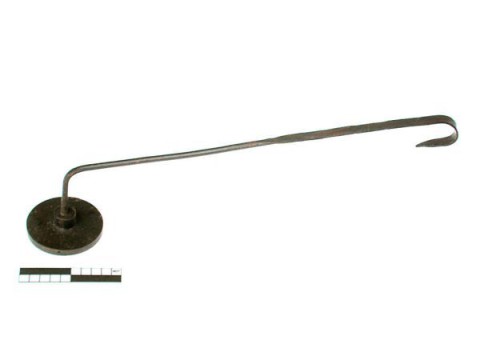
Salamander
Cast iron kitchen utensil consisting of a round plate (approx. 5-8 cm
diameter; approx. 1-3 cm thick), attached in the middle to a bent, long
(approx. 40 cm) handle, with or without wooden handle. When the salamander
is heated red hot over the gas or in the fire, it can be used to brown the
top of gratin dishes or sugared desserts with a crispy crust or a layer of
caramel.The salamander is almost indistinguishable from the hat iron, a
similar tool that was heated on the stove and used to iron the inside of
hats. [MOT]
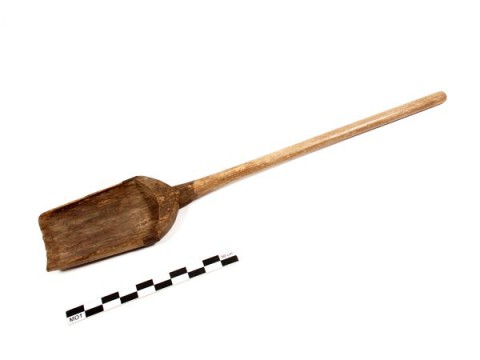
Sand shovel (brickmaker)
Monoxile (willow) shovel with slightly trapezoidal blade and rounded
corners, with which the brickmaker scoops the dry river sand into a
wheelbarrow. The sand should ensure that the clay does not stick to the
wooden tools. The brickmaker's sand shovel can be distinguished from the
mud scupit. [EMABB]
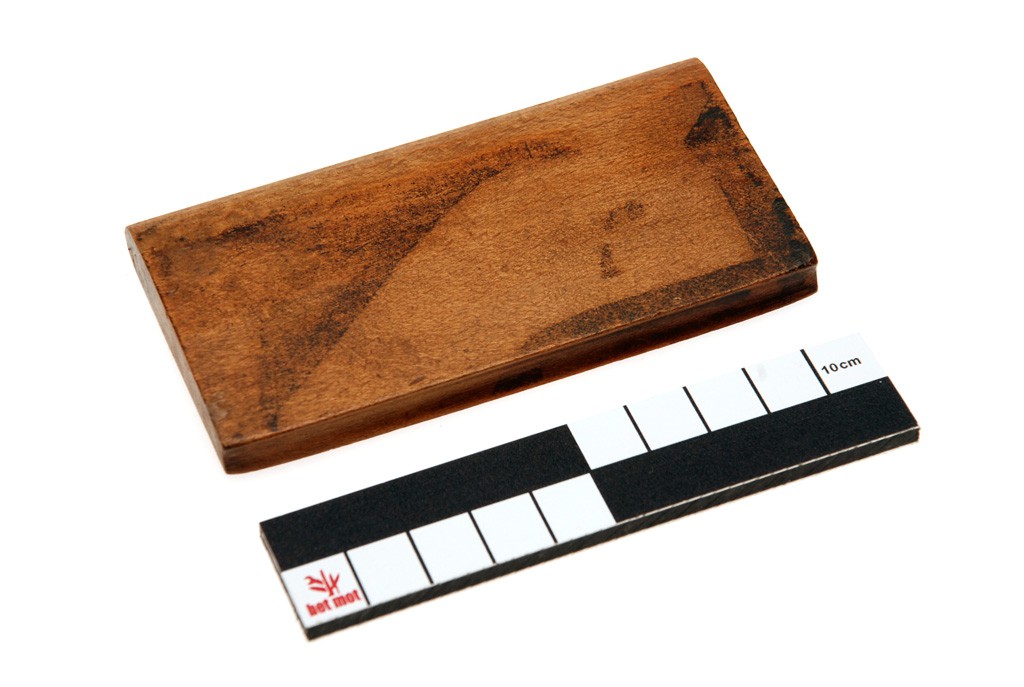
Sandpaper
This text can only be consulted in Dutch
<https://www.mot.be/resource/Tool/sandpaper?lang=nl>
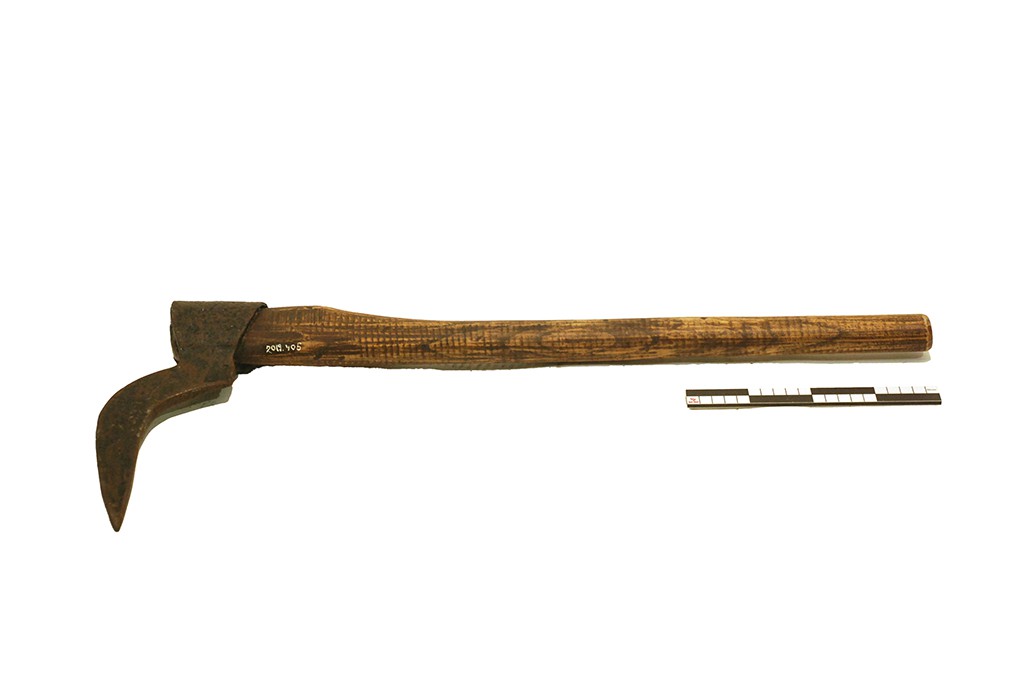
Sappie
The sappie serves to rotate trunks and beams, sometimes also to pull them
(cf. cant hook, ring dog). It is a pointed, slightly curved iron of about
25-30 cm, with an eye at the end, into which a straight or curved handle of
1.10-1.40 m protrudes (weight: 2.5-5 kg). The iron is placed on the ground,
under the trunk. The user pulls on the handle, which is almost vertical.
The point then sticks into the wood and the trunk rolls. When a piece is
pulled, the user punches his tool into the wood, as he sometimes does with
his axe, to have a grip. [MOT]
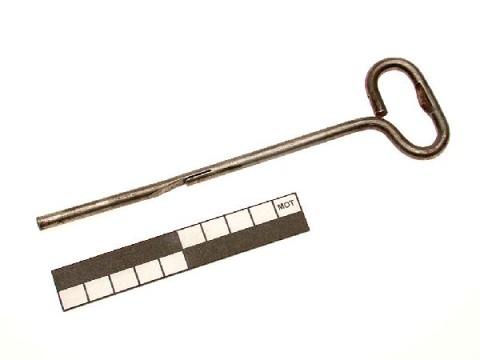
Sardine can opener
This text can only be consulted in Dutch
<https://www.mot.be/resource/Tool/sardine-can-opener?lang=nl>
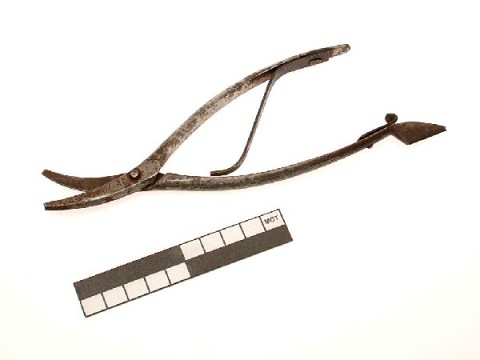
Sardine shears
This text can only be consulted in Dutch
<https://www.mot.be/resource/Tool/sardine-shears?lang=nl>
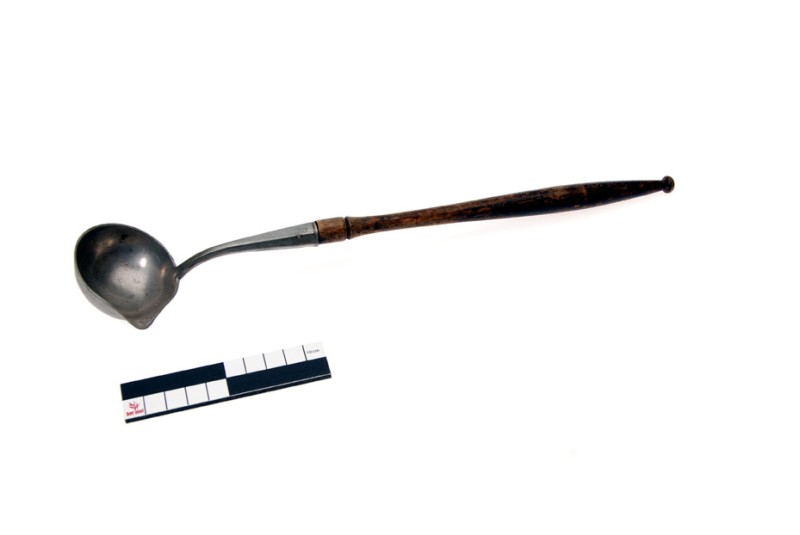
Sauce spoon
A sauce spoon is used to baste meat or dishes with sauce. This is a spoon
with a cup-shaped (approx. 5 cm diameter), metal top with a pouring spout
on one side and a long (approx. 25-30 cm), possibly wooden handle. The
handle is flush with the scoop - unlike the ladle - which makes scooping
into shallow frying pans easier. [MOT]
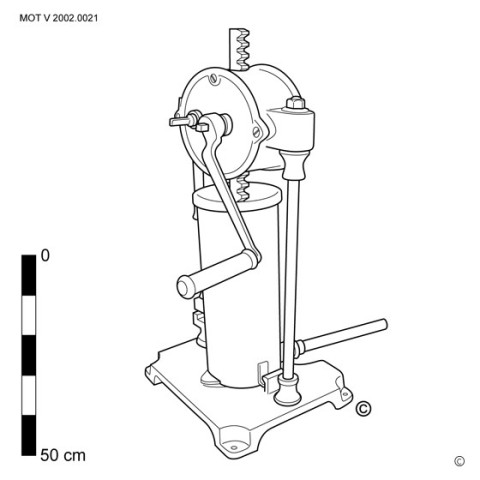
Sausage filler
This text can only be consulted in Dutch
<https://www.mot.be/resource/Tool/sausage-filler?lang=nl>
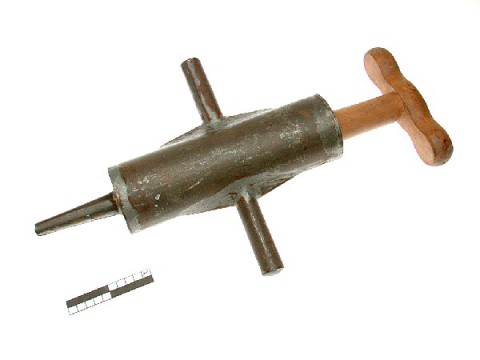
Sausage stuffer
The butcher makes sausages with a sausage stuffer. It consists of a metal
cylinder with a narrow tube at the bottom, in the middle two handles
opposite each other and an accompanying wooden pestle (piston) with crank.
Finely chopped meat, mixed with fat, bread, spices, etc., is placed in the
cylinder and pushed through the restriction with the pestle. The handles
are held with both hands, while the crutch is held against the stomach. A
well-cleaned intestine, hung over the tube, becomes filled with the meat.
The butcher can also use a simple sausage stuffer horn through which the
meat is pushed with the thumb or use the heavier sausage filler, driven
with a crank. [MOT]
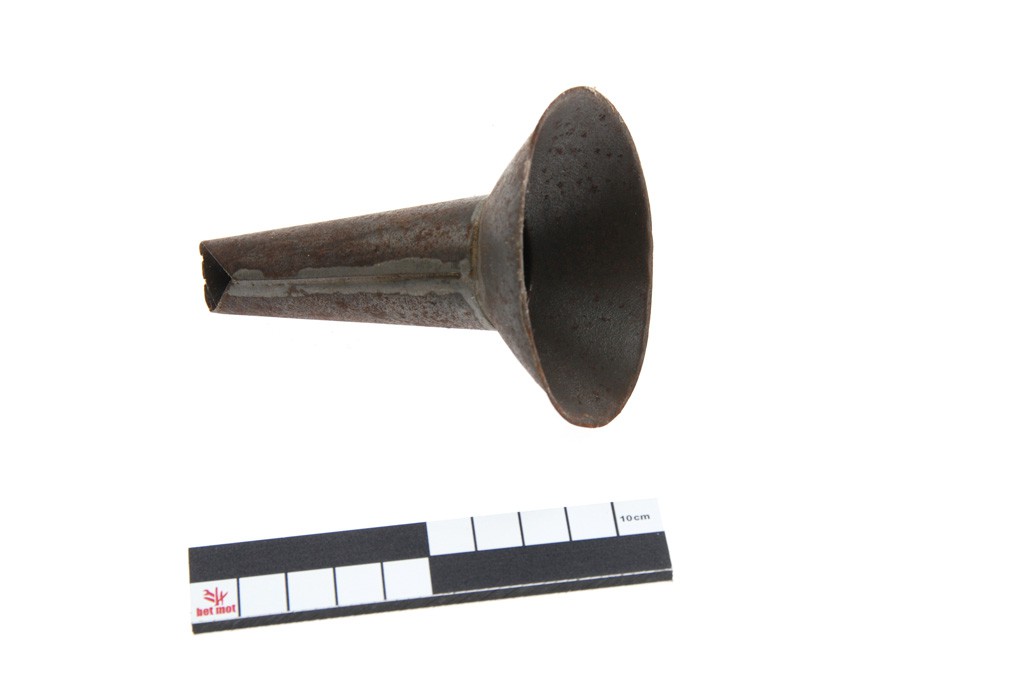
Sausage stuffer horn
This text can only be consulted in Dutch
<https://www.mot.be/resource/Tool/sausage-stuffer-horn?lang=nl>
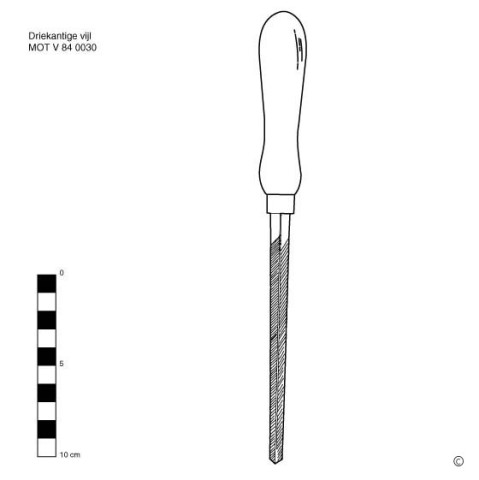
Saw file
This text can only be consulted in Dutch
<https://www.mot.be/resource/Tool/saw-file?lang=nl>
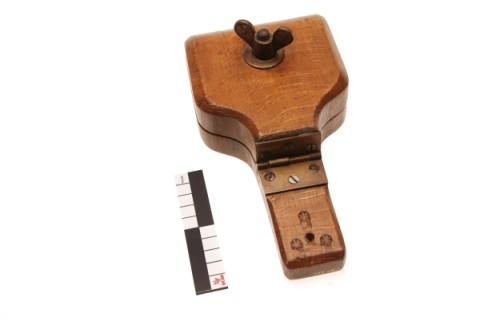
Saw file holder
If you want to set the teeth of a saw (see saw-setting iron and saw-setting
pliers) and / or files (see saw file), the saw blade can be fixed in a saw
file holder. It consists of two wooden boards (approx. 10-50 cm long) that
can be tightened with one or more screws. There are loose and fixed models
that can be screwed to the workbench. [MOT]
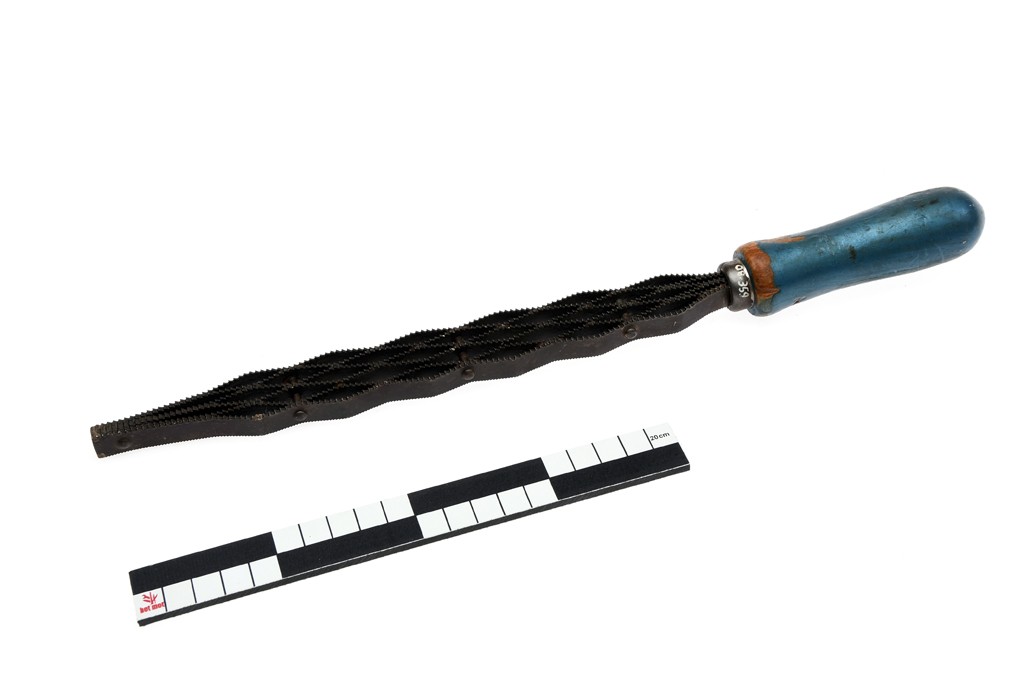
Saw rasp
This new tool file on the saw rasp (1) is under construction.This rasp can
be used as a rasp for wood but is also suitable for working soft metal,
plastic, plaster, etc. [MOT](1) Proper name unknown. German: 'Sägeraspeln',
analogous to the drill saw.
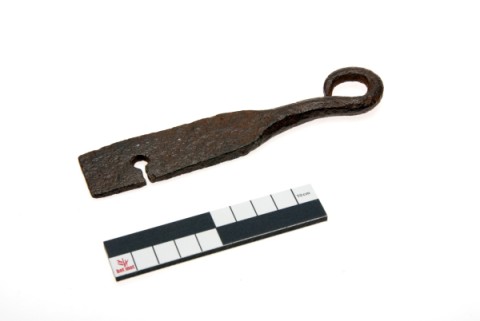
Saw-setting iron
This text can only be consulted in Dutch
<https://www.mot.be/resource/Tool/saw-setting-iron?lang=nl>
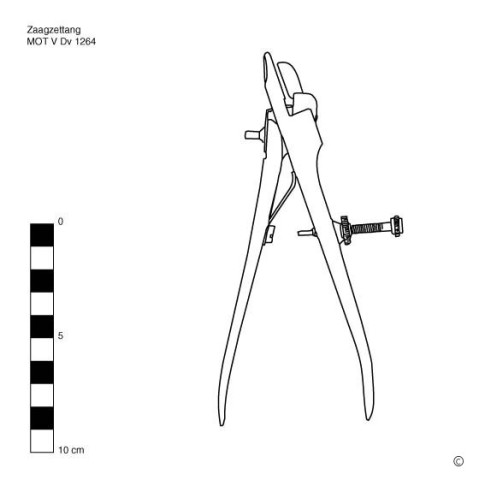
Saw-setting pliers
This text can only be consulted in Dutch
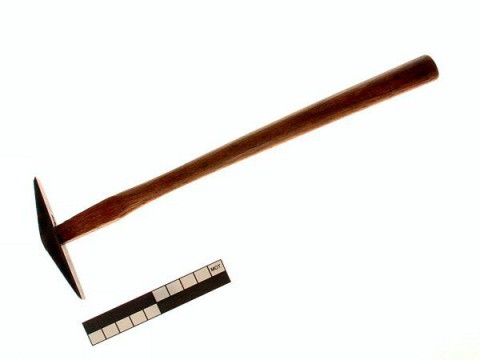
Sawset hammer
Hammer for setting a saw with relatively large teeth, i.e. for leveling the
teeth in the same way. It is a double pin steel hammer. The ends are often
grooved so that it does not slip when you hit the hard sawtooth. The sawing
hammer comes in different sizes. Distinguishable from the whetting hammer,
which is heavier and has a shorter handle. See also the saw-setting iron
and saw-setting pliers. [MOT]
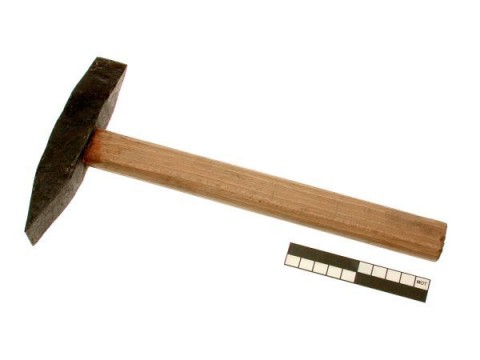
Scaling hammer
This text can only be consulted in Dutch
<https://www.mot.be/resource/Tool/scaling-hammer?lang=nl>
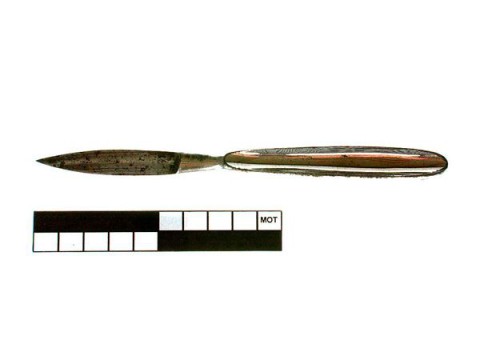
Scalpel
This knife was originally made of steel, later of chromed steel or
stainless steel. Blade and handle consist of one piece, or can be combined
into one. In the first case, the blade must be sharpened regularly, in the
other case, you have replaceable blades that are attached to the handle.
The blade can be straight, convex or curved with a razor-sharp edge. The
length of the blade varies between 1.5 and 6 cm. The blade cuts on one or
both sides and has a rounded or very sharp point. It is used by surgeons
and veterinarians to accurately make fine, deep cuts during surgery. The
scalpel is also used by the painting conservator who scrapes and smooths
the putty applied to gaps in the painting. See also penknife and pocket
knife. [MOT]
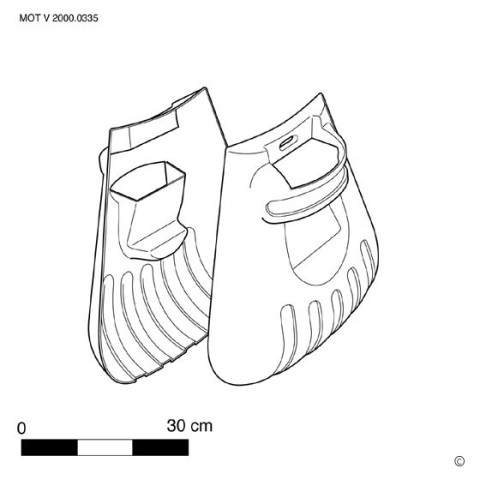
Scoops (gardener)
This text can only be consulted in Dutch
<https://www.mot.be/resource/Tool/scoops-gardener?lang=nl>
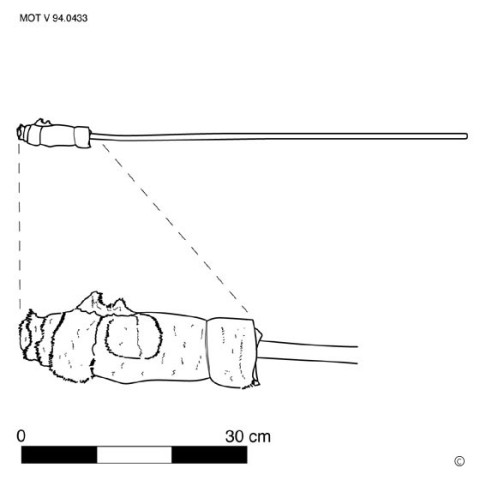
Scovel
This text can only be consulted in Dutch
<https://www.mot.be/resource/Tool/scovel?lang=nl>
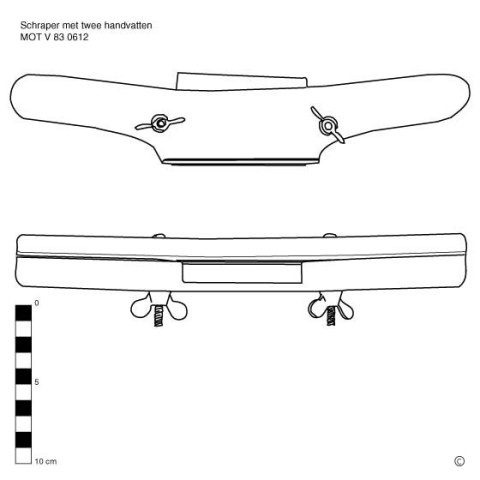
Scraper
This text can only be consulted in Dutch
<https://www.mot.be/resource/Tool/scraper?lang=nl>
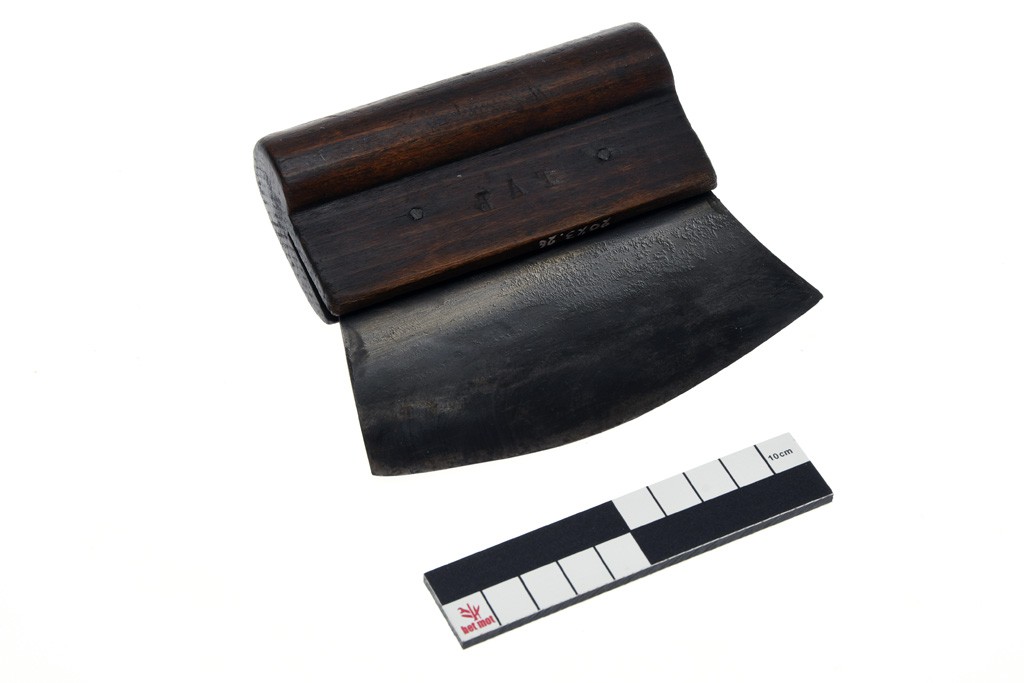
Scraper (cooper)
This text can only be consulted in Dutch
<https://www.mot.be/resource/Tool/scraper-cooper?lang=nl>
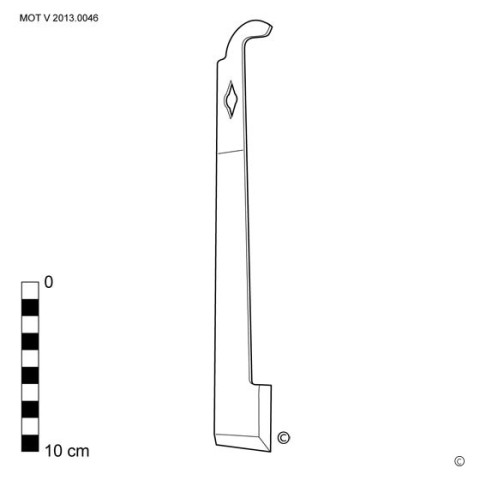
Scraping knife
This text can only be consulted in Dutch
<https://www.mot.be/resource/Tool/scraping-knife?lang=nl>
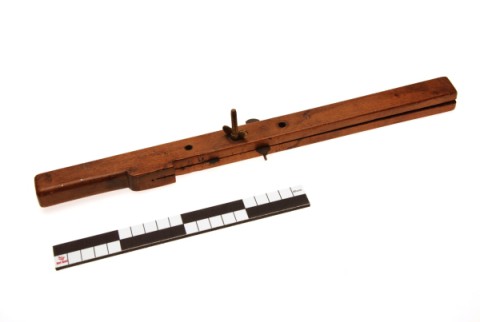
Scratch stock
The text on the scratch stock is only available in Dutch.
